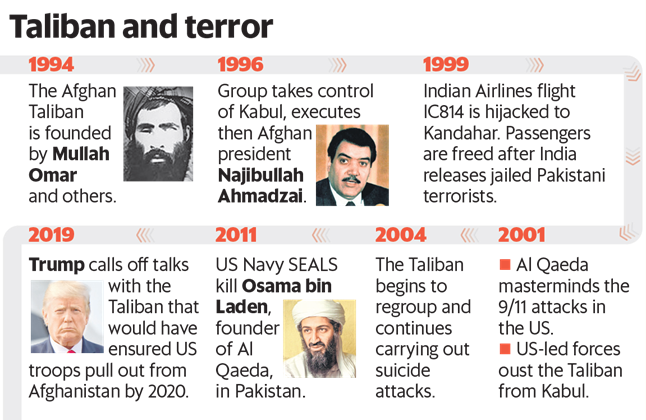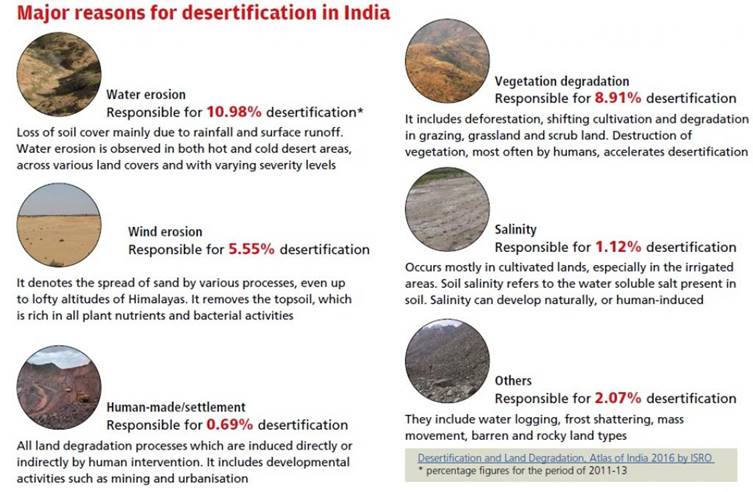



Government to tweak Income Tax Act, won’t replace it with direct tax code
The government is unlikely to replace the Income Tax Act with the direct tax code, and will incorporate suggestions from the draft law to avoid creating more uncertainty for businesses amid an economic slowdown.
- To make the law capable of dealing with new business models by incorporating global best practices.
- To avoid creating any new uncertainty among businesses.
- Replacing the six-decade-old law will unsettle well-established jurisprudence.
- If the law is made too simple, it may become inequitable.
- Changes in tax rates have been a continuous process, executed through annual Finance Acts.
- An across-the-board 25% tax rate for both local and foreign companies.
- The task force has not recommended raising of the income tax exemption limit from the current level of ₹2.5 lakh.
- It has suggested five tax brackets of 5%, 10%, 20%, 30% and 35%.
- Up to ₹2.5 lakh - Exempted
- Up to ₹5 lakh - 5% (rebate up to ₹12,500)
- ₹5 lakh to ₹10 lakh - 10%
- ₹10 lakh - ₹20 lakh - 20%
- ₹20 lakh to ₹2 crore - 30%
- ₹2 crore and above - 35%
Reference: https://www.livemint.com/politics/policy/government-to-tweak-income-tax-act-won-t-replace-it-with-direct-tax-code-1568050937110.html
The US has called off peace talks with the Taliban, the Afghanistan-based terror group, bringing relief to India and Afghanistan, as the talks would have led to US troops leaving the country after 18 years.
- US was to withdraw 5,400 troops from five bases that it controls in Afghanistan within 20 weeks.
- The Taliban would ensure the country won’t ever again be used as a base for groups seeking to attack the US and its allies.
- Pull-out of the remaining forces depends on terms including the start of peace talks between the Afghan government and the Taliban.
- India has long batted for an “inclusive peace and reconciliation process in Afghanistan, which is Afghan-led, Afghan-owned and Afghan-controlled, leading to a lasting political solution based on the preservation of the gains" made since 2001.
- It includes preservation of the constitutional order and women’s rights.
- Anti-India terrorist groups could find a safe haven in Afghanistan, and seeks to insulate itself from groups such as the Islamic State.
- India would not like to see other groups join the fight, it is already fighting terrorists sponsored by Pakistan.
- Peace deal could provide an opportunity for a resurgent Taliban to expand their offensives across Afghanistan.
- The Taliban insurgency has strengthened its grip over the past three years, with the government in Kabul controlling just 56 percent of Afghanistan, down from 72 percent in 2015.
- More than 2,400 U.S. forces have died in the 17-year-old war in Afghanistan.
- Donald Trump has asked “What are we doing there? We’ve been there all these years."

- The breakthrough in the US-Taliban talks seems to have happened after Pakistan Prime Minister Imran Khan visited the US in July.
- Calling off talks has shocked the Pakistan.
- Trump’s move to cancel peace talks with the Taliban could be a tactical one.
- Critics points out to US - North Korea engagement where he cancelled talks with Kim Jong-un only to reschedule them days later.
- Trump is isolated in his quest for a withdrawal deal, with senior people around him opposed to it.
Reference: https://www.livemint.com/news/india/us-taliban-talks-getting-called-off-is-a-win-for-india-1568050018667.html
India will restore 26 million hectares of degraded land by 2030, more than its earlier target of 21 million hectares, Prime Minister Narendra Modi said at a UN conference to combat desertification(UNCCD).
The agenda of the UNCCD is to reverse degradation of land and fix critical gaps in its management.
- Tackle the problem of plastic waste.
- Prepare a global water action agenda.
- India will be happy to help other friendly countries to develop land restoration strategies through cost-effective satellite and space technology.
- Will undertake initiatives for greater South-South cooperation in addressing issues of climate change, biodiversity and land degradation.
- Development of environment-friendly substitutes.
The Conference of parties (COP-14) of UNCCD is being hosted by India this time. As many as 196 countries are participating in the 12-day conference that began on 2nd September.
- Most of the desertification is happening in Africa and Asia, which account for almost 67 per cent of the degradation occurring in dryland areas.
- By 2040, some 43 per cent of big cities (housing 0.3 million population), located in dryland areas, will be hit by desertification.
30% of country’s total geographical area being affected by land degradation.

- Schemes like Pradhan Mantri Fasal Bima Yojana (PMFBY), Soil Health Card Scheme, Soil Health Management Scheme, Pradhan Mantri Krishi Sinchayee Yojna (PKSY), Per Drop More Crop, , etc. were launched. which are helping to reduce land degradation.
- Swachh Bharat Mission, with a dedicated corpus of funds to address concerns over waste disposal, sewage treatment, sanitation to prevent land degradation.
- National Mission for a Green India and National Afforestation Programme (Ministry of Environment, Forest and Climate Change) that have been at the forefront of India’s efforts to mitigate concerns over desertification.
- ISRO has developed an inventory and monitoring of desertification of the entire country using Indian Remote Sensing Satellites data in Geographical Information System (GIS) environment.
- The Bonn Challenge is a global effort to bring 150 million hectares of the world’s deforested and degraded land into restoration by 2020.
- India joined the voluntary Bonn Challenge pledge to bring into restoration 13 million hectares of degraded and deforested land by the year 2020, and additional 8 million hectares by 2030.
- It was conceptualised at the UNFCC Conference of the Parties (COP) 2015 in Paris. A project was launched to enhance capacity of forest landscape restoration (FLR) and Bonn Challenge in India. Under this a pilot phase of 3.5 years implemented in the States of Haryana, Madhya Pradesh, Maharashtra, Nagaland and Karnataka.
- Under this project Ministry of Environment, Forest and Climate Change (MoEFCC) in partnership with The International Union for Conservation of Nature (IUCN), aims to develop and adapt best practices and monitoring protocols for the Indian states.
- Established in 1994, the United Nations Convention to Combat Desertification (UNCCD) is the sole legally binding international agreement linking environment and development to sustainable land management.
- The Convention addresses specifically the arid, semi-arid and dry sub-humid areas, known as the drylands.
- The UNCCD is particularly committed to a bottom-up approach, encouraging the participation of local people in combating desertification and land degradation.
- It facilitates cooperation between developed and developing countries.
- the UNCCD collaborates closely with the other two Rio Conventions; the Convention on Biological Diversity (CBD) and the United Nations Framework Convention on Climate Change (UNFCCC).
- The COP was established by the Convention as the supreme decision-making body.
- It comprises ratifying governments and regional economic integration organizations, such as the European Union.
- One of the main functions of the COP is to review reports submitted by the Parties detailing how they are carrying out their commitments.
Reference: https://www.livemint.com/news/india/india-to-restore-more-degraded-land-end-single-use-plastic-says-pm-modi-1568013881235.html
DPCC inspected 43 out of a list of 80 centres sent to them by the CPCB, at least 20 e-waste collection centres of multinational giants, including Samsung, HP, Canon and Vivo, were found either untraceable or non-existent.
- According to officials, a “loophole” in the E-Waste (Management) Rules 2016, amended in 2018 to introduce collection targets.
- CPCB forwards the EPR to state pollution control boards for monitoring, which means that a plan could initially be approved by the CPCB without a field audit.
- Manufacturer, dealer, refurbisher and Producer Responsibility Organization (PRO) have been introduced as additional stakeholders in the rules.
- Compact Fluorescent Lamp (CFL) and other mercury containing lamp brought under the purview of rules.
- Collection mechanism based approach has been adopted to include collection centre, collection point, take back system etc. for collection of e - waste by producers under Extended Producer Responsibility (EPR).
- Provision for Pan India EPR Authorization by CPCB has been introduced replacing the state wise EPR authorization.
- Deposit Refund Scheme has been introduced as an additional economic instrument wherein the producer charges an additional amount as a deposit at the time of sale of the electrical and electronic equipment and returns it to the consumer along with interest when the end - of - life electrical and electronic equipment is returned.
- The dealer, if has been given the responsibility of collection on behalf of the producer, need to collect the e - waste by providing the consumer a box and channelize it to Producer.
- Urban Local Bodies (Municipal Committee/Council/Corporation) has been assign the duty to collect and channelized the orphan products to authorized dismantler or recycler.
Reference: https://indianexpress.com/article/india/tech-firms-e-waste-centres-addresses-fake-delhi-probe-5981091/
A report in The Lancet concludes that it is possible to eradicate malaria as early as 2050 — or within a generation — with the right strategies and sufficient funding.
- Improvement in socio-economic and environmental trends along with high coverage of malaria interventions can create a world in 2050 with malaria persisting only in few pockets of low-level transmission in equatorial Africa.
- The world must improve implementation of malaria control programmes.
- Development and roll out innovative new tools to overcome the biological challenges to eradication.
- Malaria-endemic countries must be provide with the financial aids and investment.
The National Framework for Malaria Elimination (NFME) 2016-2030 outlines India’s strategy for elimination of the disease by 2030.
- Eliminate malaria (zero indigenous cases) throughout the entire country by 2030.
- Maintain malaria–free status in areas where malaria transmission has been interrupted and prevent re-introduction of malaria.
- Eliminate Malaria from all low (Category 1) and moderate (Category 2) endemic states/UTs (26) by 2022.
- Reduce incidence of malaria to less than 1 case per 1000 population in all States/UTs and the districts and malaria elimination in 31 states/UTs by 2024
- Interrupt indigenous transmission of malaria in all States/ UTs (Category 3) by 2027
- Prevent re-establishment of local transmission of malaria in areas where it has been eliminated and to maintain malaria-free status of the country by 2030
- Programme phasing considering the varying malaria endemism in the country
- Classification of States/UTs based on API as primary criterion (Category 0: Prevention of re- introduction phase; Category 1: Elimination phase; Category 2: Pre-elimination phase; Category 3: Intensified control phase)
- District as the unit of planning and implementation
- Focus on high endemic areas
- Special strategy for P. vivax elimination.
Reference: https://indianexpress.com/article/explained/eradicating-malaria-by-2050-why-study-says-it-can-be-done-5981281/

© 2025 iasgyan. All right reserved